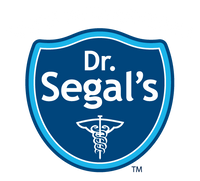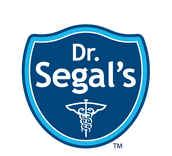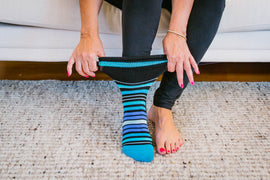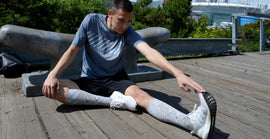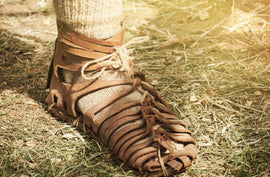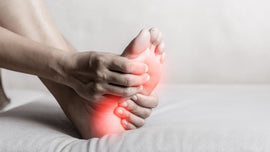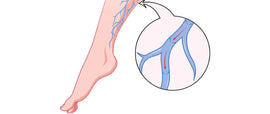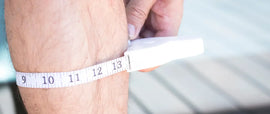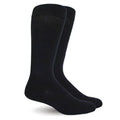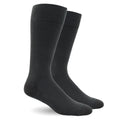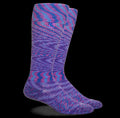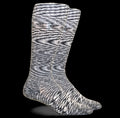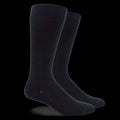The Incredible Journey: Unraveling the Circulation of Blood in Your Veins
Posted by HAYLIE SEGAL
Have you ever wondered about the intricate network that enables your body to receive vital oxygen and nutrients while efficiently removing waste products? The human circulatory system, comprising the heart, arteries, capillaries, and veins, plays a pivotal role in maintaining our overall health and well-being. In this blog, we will delve into the mesmerizing journey of blood circulation within our veins, highlighting the crucial role they play in keeping us alive and functioning optimally.
Veins: The Unsung Heroes of Circulation:
While arteries transport oxygenated blood away from the heart, veins form the intricate pathway responsible for carrying deoxygenated blood back to the heart. Veins are often underappreciated, overshadowed by their more prominent counterparts, the arteries. However, their role is vital in ensuring a continuous circulation of blood throughout our bodies.
Anatomy of Veins:
Veins are blood vessels that possess unique characteristics that enable them to fulfill their purpose efficiently. Structurally, veins have thinner and less elastic walls compared to arteries, allowing them to withstand lower pressure exerted by deoxygenated blood. Veins are equipped with one-way valves, strategically placed along their interior, to prevent blood from flowing backward. These valves ensure unidirectional flow, facilitating blood return to the heart against gravity, especially in the extremities.
The Circulatory Journey:
To better understand how blood circulates through our veins, let's embark on a journey through the circulatory system.
- Venous Return:
The journey begins with blood that has circulated through the body, delivering oxygen and nutrients to the tissues. Depleted of oxygen and laden with waste products, the blood collects in tiny vessels called venules. These venules converge to form larger veins, gradually merging into major veins.
- The Superior and Inferior Vena Cava:
Two key veins in the circulatory system are the superior vena cava and the inferior vena cava. The superior vena cava collects blood from the upper body, including the head, neck, and upper limbs, and delivers it to the right atrium of the heart. Similarly, the inferior vena cava receives blood from the lower body, including the abdomen, pelvis, and lower limbs, and also empties into the right atrium.
- Right Atrium and Right Ventricle:
Upon entering the right atrium, deoxygenated blood awaits its turn to enter the right ventricle, the heart's pumping chamber. The right ventricle contracts, propelling the blood into the pulmonary artery, which leads to the lungs.
- Pulmonary Circulation:
The pulmonary artery branches into smaller vessels called arterioles, ultimately reaching the pulmonary capillaries in the lungs. Here, a remarkable exchange occurs, as deoxygenated blood releases carbon dioxide and receives fresh oxygen. Oxygenated blood then travels back to the heart through the pulmonary veins.
- The Left Atrium and Left Ventricle:
The newly oxygenated blood enters the left atrium and subsequently passes into the left ventricle. The left ventricle, being the heart's most robust chamber, forcefully contracts, pushing the oxygenated blood into the aorta, the largest artery in the body.
- Systemic Circulation:
From the aorta, oxygenated blood journeys through a network of arteries, arterioles, and eventually, capillaries, where it nourishes the body's organs, tissues, and cells. Through this intricate system, oxygen and nutrients are supplied, while waste products, such as carbon dioxide, are collected.
- Venous Return:
Depleted of oxygen and enriched with waste products, blood re-enters the venous system via venules, converging into veins that gradually increase in size. The veins propel the deoxygenated blood towards the heart through a combination of mechanisms, including the skeletal muscle pump, respiratory movements, and the assistance of one-way valves.
- The Journey Repeats:
Finally, the deoxygenated blood makes its way back to the heart through the superior and inferior vena cava, completing the cycle. The process begins anew as the blood enters the heart's right atrium, ready to embark on another remarkable journey through the circulatory system.
Conclusion:
The circulation of blood through our veins is an intricate and awe-inspiring process, ensuring that vital oxygen and nutrients reach every corner of our bodies while efficiently removing waste products. Veins, often overshadowed by their arterial counterparts, are the unsung heroes of this journey, playing a vital role in maintaining our overall health and well-being.
Understanding how blood circulates through our veins highlights the importance of maintaining a healthy cardiovascular system. Regular exercise, a balanced diet, lifestyle choices, and the use of compression socks that promote good circulation can contribute to the optimal functioning of our veins and overall well-being.
Let us marvel at the wonders of our circulatory system, appreciating the remarkable journey our blood takes, and recognizing the essential role veins play in keeping us alive and thriving.
SHARE:

